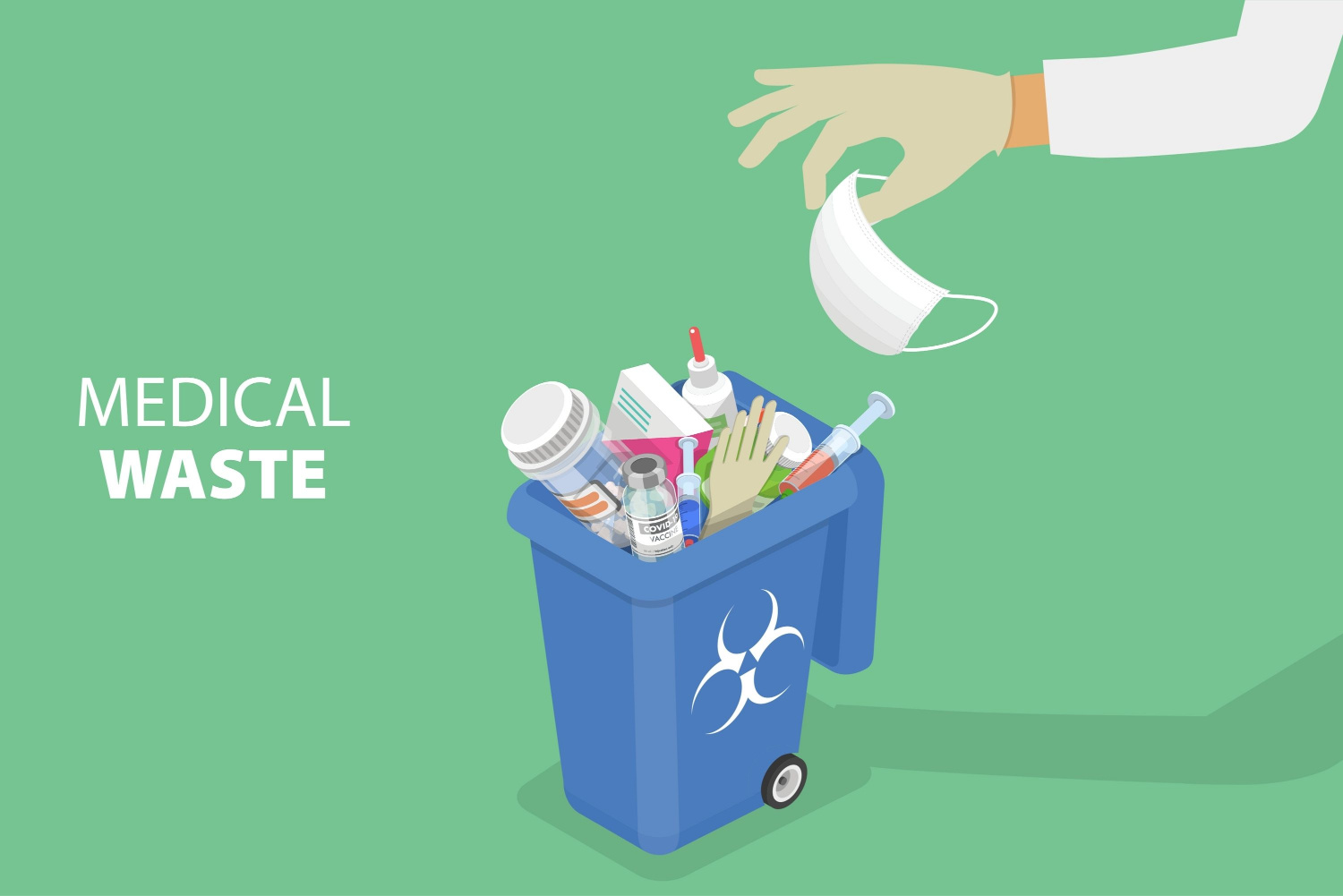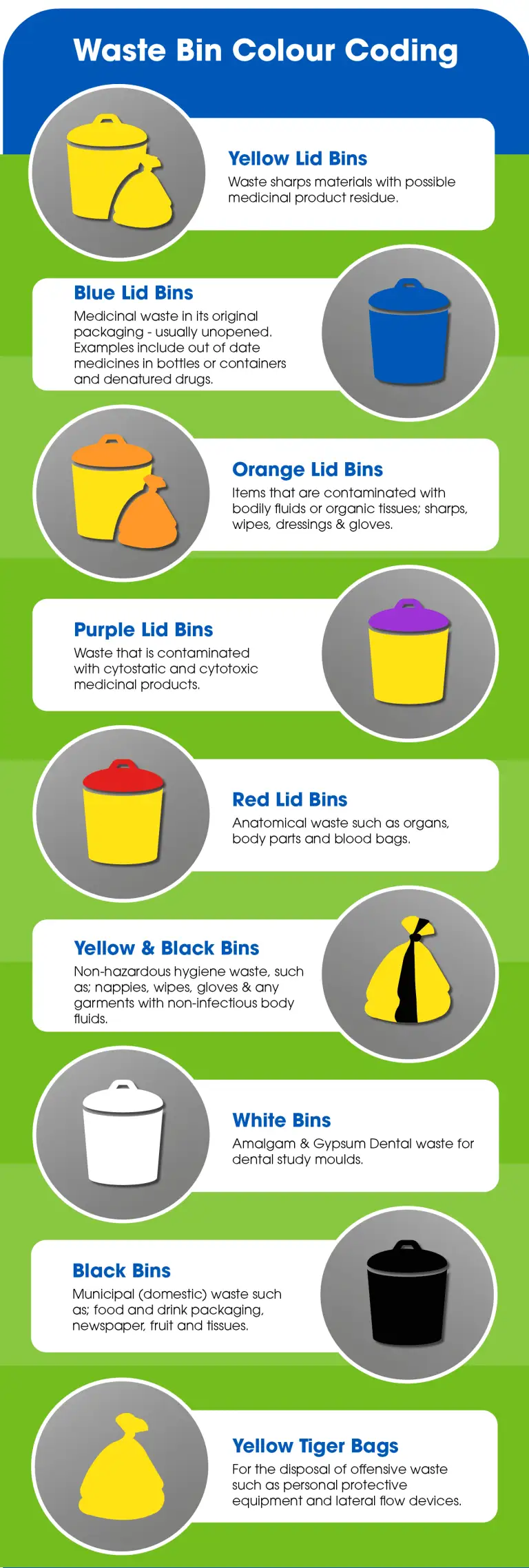Reliable and Responsible Medical Waste Removal: Protecting People and the Earth
Conformity and Rules for Medical Waste Disposal
Compliance and laws for medical waste disposal play an important role in making sure the safety and health of both medical care professionals and the basic public. Proper monitoring of medical waste is necessary to prevent the spread of infections, shield the environment, and keep public health. These guidelines encompass different elements, consisting of the classification and segregation of clinical waste, correct storage space and managing treatments, as well as transportation and disposal techniques.
Value of Conformity
The importance of conformity with regulations for medical garbage disposal can not be overstated. Correct disposal of medical waste is vital for ensuring the safety and security and well-being of health care workers, individuals, and the public. Clinical waste, that includes items such as used needles, contaminated gloves, and biomedical waste, can pose major health and wellness dangers otherwise managed and dealt with appropriately.
Compliance with policies makes sure that medical waste is managed in a manner that lessens the possibility for direct exposure to contagious conditions and damaging materials - medical waste disposal service. It aids avoid the spread of infections, such as HIV, hepatitis B and C, and other bloodborne virus. Conformity also plays a vital duty in securing the atmosphere by protecting against contamination of water sources, soil, and air
Failing to follow regulations can result in extreme consequences for healthcare centers, consisting of fines, lawsuit, and damages to their online reputation. Additionally, non-compliance might compromise the wellness and security of medical care workers, individuals, and the community.
Compliance with laws for medical waste disposal calls for adherence to specific guidelines and methods. These may consist of correct segregation, packaging, labeling, and storage space of clinical waste. It also includes making use of approved disposal techniques, such as landfilling, incineration, or autoclaving, depending on the type of waste.
Regulative Agencies and Bodies
Governing companies and bodies play an important duty in supervising conformity with regulations for medical garbage disposal. These organizations are in charge of setting requirements, standards, and protocols to make sure the safe and proper handling of medical waste. They apply and keep track of conformity to safeguard public wellness and the environment.
One of one of the most prominent governing firms in the USA is the Epa (EPA) The EPA is accountable for regulating the storage, transport, treatment, and disposal of medical waste. They establish guidelines for waste generators, transporters, and treatment facilities to follow, guaranteeing that all required safety measures are taken to avoid the spread of illness and contamination.
Another crucial governing body is the Occupational Safety and Wellness Administration (OSHA) OSHA sets laws and standards to protect workers from work-related hazards, including those pertaining to clinical waste. WasteX Medical Waste Disposal. They give standards for the safe handling and disposal of medical waste to protect employees in medical care centers
In enhancement to these federal agencies, individual states likewise have their own governing bodies that oversee medical waste disposal. These companies may have their very own particular laws and requirements that must be followed.

Classification and Segregation of Medical Waste
To make certain appropriate administration of clinical waste, it is necessary to categorize and segregate it according to developed guidelines and protocols. medical waste removal. Classification and partition play a critical duty in lessening the threat of infection, safeguarding the atmosphere, and making certain the safety and security of health care employees and the general public
Medical waste is categorized into different categories based on its prospective hazard level. These classifications include contagious waste, pathological waste, sharps waste, pharmaceutical waste, chemical waste, and contaminated waste. Each group calls for details handling, storage, transportation, and disposal methods to reduce the risk of exposure and contamination.
Segregation of medical waste involves separating various sorts of waste at the resource. This procedure ensures that waste with different hazard levels is not mixed, decreasing the capacity for cross-contamination and making disposal procedures more effective. Appropriate partition is accomplished with the usage of color-coded containers and tags, which help healthcare workers and waste management personnel identify and handle each kind of waste properly.
Along with classification and segregation, healthcare centers must additionally stick to local, state, and government laws regarding medical waste administration. These guidelines detail certain needs for storage space, transportation, therapy, and final disposal of medical waste, making sure conformity and preserving public health and wellness and safety and security.
Correct Storage Space and Managing Treatments
Correct storage space and handling procedures play an important duty in making certain the secure and certified administration of clinical waste. Medical waste, which includes items such as utilized syringes, contaminated handwear covers, and ended medications, can present serious wellness and environmental threats if not handled appropriately. Consequently, it is vital for health care facilities and various other generators of medical waste to apply stringent storage space and managing protocols.
To start with, medical waste must be stored in durable, leak-proof containers that are especially made for this function. These containers need to be identified with the universal biohazard icon and words "clinical waste" to plainly show the contents. In addition, the containers must be maintained securely near avoid any kind of prospective leakage or splilling.
Furthermore, it is very important to segregate different types of clinical waste to avoid cross-contamination. Sharps, such as needles and scalpels, ought to be kept in puncture-resistant containers to lessen the risk of injuries - WasteX Medical Waste Disposal. Chemical waste, such as anti-bacterials and solvents, must be kept separately from various other kinds of clinical waste to avoid chain reactions or harmful direct exposures

Transportation and Disposal Techniques
Health care centers must make certain the secure transportation and correct disposal of their clinical waste to adhere to guidelines and shield public health. Transportation and disposal methods play an essential function in protecting against the spread of infectious diseases and lessening the environmental impact of clinical waste.
To carry medical waste, health care centers must make use of leak-proof and puncture-resistant containers that are identified with the biohazard symbol. These containers ought to be safely sealed to avoid any leakage throughout transport. Additionally, healthcare centers should establish protocols for the transport process, consisting of making use of committed lorries and qualified workers.
When the clinical waste gets to the disposal center, it goes through various techniques of therapy. One usual method is incineration, which involves melting the waste at high temperature levels to ruin pathogens and minimize the quantity of waste. An additional method is autoclaving, which uses vapor and stress to disinfect the go right here waste. After treatment, the waste is generally sent to a landfill or a waste-to-energy center for last disposal.
It is essential for healthcare facilities to work with licensed and permitted waste management business to make sure correct transportation and disposal of clinical waste. These business have the competence and sources to manage medical waste safely and in conformity with guidelines.
Verdict
In conclusion, conformity with guidelines for medical waste disposal is of utmost importance to make certain public health and wellness and safety and security. Governing agencies and bodies play a vital duty in implementing these regulations. Proper category and partition of clinical waste, in addition to complying with ideal storage space and dealing with procedures, are vital to prevent contamination and the spread of diseases. Sufficient transportation and disposal methods have to be executed to minimize ecological impacts. On the whole, adherence to compliance and policies is required to efficiently handle clinical waste.
Clinical waste, which consists of things such as made use of needles, polluted handwear covers, and biomedical waste, can posture significant health threats if not taken care of and disposed of properly.
These classifications consist of infectious waste, pathological waste, sharps waste, pharmaceutical waste, chemical waste, and contaminated waste.Segregation of medical waste includes dividing various kinds of waste at the resource. Correct segregation is achieved through the usage of color-coded containers and tags, which assist health care employees and waste monitoring employees take care of each kind and determine of waste properly.
Chemical waste, such as solvents and disinfectants, ought to be saved separately from various other kinds of medical waste to protect against unsafe direct exposures or chemical reactions.